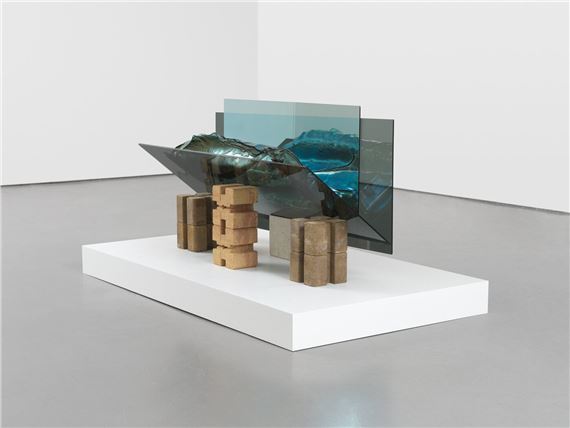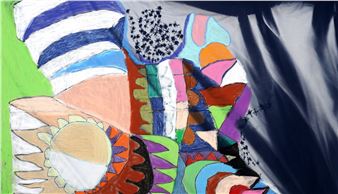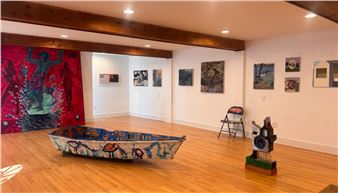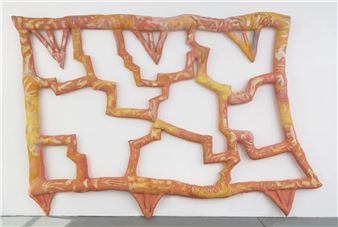Charisse Pearlina Weston: mis-/mГ©- (squeeze)
Jack Shainman Gallery is pleased to present mis-/mГ©- (squeeze), an exhibition of new work by Charisse Pearlina Weston, marking the artistвҖҷs first solo presentation with the gallery since joining the roster in 2024.
Encompassing sculpture, photography, painting and installation, this new body of work mobilizes pressure and вҖҳthe squeezeвҖҷ to examine desire as a libidinal structure of ideological misrecognition. Through formal explorations, this series articulates the pressurized terms of displacement through which racialized recognition is constituted. For Black life, misrecognition is not abstract error but an intimate structure: a hidden compression of desire and a deformation of visibility that bears down on the interior. By warping reflective surfaces and imagery that promise clarityвҖ”the mirror, the photographвҖ”the works in this exhibition stage how Black interior life persists in and against вҖҳthe squeeze,вҖҷ holding open opacity, fracture and concealment as modes of resistant intimacy.
The English prefix mis- (from Old English mis-, вҖҳwrongly,вҖҷ вҖҳamiss,вҖҷ вҖҳastrayвҖҷ) and its French counterpart mГ©- (from Latin minus, вҖҳlessвҖҷ and male, вҖҳbadlyвҖҷ) both carry a sense of deviation. Each marks a linguistic force that bends its root off course. As such, its prefixal operation is not simply one of failureвҖ”it places its subject under duress, rendering it only ever able to receive less than what it seeks. In this sense, the very etymology of mis-/mГ©- enacts вҖҳthe squeezeвҖҷ: a constrictive illusion that erroneously transforms the distorted into the intelligible and the incomplete into the whole.
In Lacanian theory, mГ©connaissance (вҖҳmisrecognitionвҖҷ) occurs when a subject identifies with an image or symbol that, endowed through the subjectвҖҷs desires, promises coherence but is, in fact, alienating. Althusser extends this concept through interpellation, where ideology hails individuals into subjecthood by offering identity and belonging through misrecognition. These are not passive operations: they apply pressure on the subject to conform to predetermined and often oppressive symbolic structures, pressures which are not evenly distributed. For Black life, misrecognition is never only alienation but also a violent intimacy where the demand to be seen and placed is bound to the risk of overexposed erasure.

Recommended for you
Jack Shainman Gallery is pleased to present mis-/mГ©- (squeeze), an exhibition of new work by Charisse Pearlina Weston, marking the artistвҖҷs first solo presentation with the gallery since joining the roster in 2024.
Encompassing sculpture, photography, painting and installation, this new body of work mobilizes pressure and вҖҳthe squeezeвҖҷ to examine desire as a libidinal structure of ideological misrecognition. Through formal explorations, this series articulates the pressurized terms of displacement through which racialized recognition is constituted. For Black life, misrecognition is not abstract error but an intimate structure: a hidden compression of desire and a deformation of visibility that bears down on the interior. By warping reflective surfaces and imagery that promise clarityвҖ”the mirror, the photographвҖ”the works in this exhibition stage how Black interior life persists in and against вҖҳthe squeeze,вҖҷ holding open opacity, fracture and concealment as modes of resistant intimacy.
The English prefix mis- (from Old English mis-, вҖҳwrongly,вҖҷ вҖҳamiss,вҖҷ вҖҳastrayвҖҷ) and its French counterpart mГ©- (from Latin minus, вҖҳlessвҖҷ and male, вҖҳbadlyвҖҷ) both carry a sense of deviation. Each marks a linguistic force that bends its root off course. As such, its prefixal operation is not simply one of failureвҖ”it places its subject under duress, rendering it only ever able to receive less than what it seeks. In this sense, the very etymology of mis-/mГ©- enacts вҖҳthe squeezeвҖҷ: a constrictive illusion that erroneously transforms the distorted into the intelligible and the incomplete into the whole.
In Lacanian theory, mГ©connaissance (вҖҳmisrecognitionвҖҷ) occurs when a subject identifies with an image or symbol that, endowed through the subjectвҖҷs desires, promises coherence but is, in fact, alienating. Althusser extends this concept through interpellation, where ideology hails individuals into subjecthood by offering identity and belonging through misrecognition. These are not passive operations: they apply pressure on the subject to conform to predetermined and often oppressive symbolic structures, pressures which are not evenly distributed. For Black life, misrecognition is never only alienation but also a violent intimacy where the demand to be seen and placed is bound to the risk of overexposed erasure.

 ARTISTS
ARTISTS













